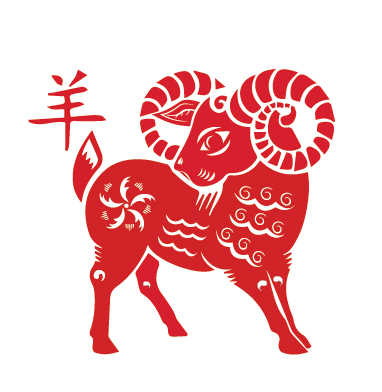
Chinese New Year is the longest and most important celebration in the Chinese calendar. In China, the New Year is a time of family reunion. Family members gather at each other's homes for visits and shared meals, most significantly a feast on New Year's Eve.
While the Chinese people are celebrating the New Year, the question puzzling people in the West is this: Is 2015 the year of the goat or the year of the sheep?
“Few ordinary Chinese are troubled by the sheep-goat distinction,” according to Xinhua, China’s state-run news agency. “However, the ambiguity has whipped up discussion in the West.”
In science, the differences are pretty pronounced: Sheep – flock-oriented, grazing animals – have 54 chromosomes, while goats – independent creatures that prefer leaves, shrubs, and vines higher off the ground – have 60. In case there’s no DNA at hand, one quick way to tell them apart is to look at their tails: Sheep’s tend to hang down while goats hold theirs up.
The trouble with the zodiac creature comes from a linguistic and cultural gap.
Mandarin, unlike English, is a language driven by symbols, not letters. The Mandarin word for the eighth animal in the 12-creature Chinese zodiac cycle is “yáng” (羊), defined in major Chinese-English dictionaries as “sheep.”
But when used with qualifiers, the same symbol can refer to other members of the Caprinae subfamily, to which belong “any such hoofed animal that eats grass and bleats,” as the New York Times puts it.
For instance, when the word “shān” (山), which alone means “mountain,” is used together with “yáng,” the resulting word, “shānyáng” (山羊) translates into “goat.”“Miányáng” (绵羊), which also means “sheep,” pairs the symbol for “cotton” with yáng. “Gōngyáng” (公羊), which uses the symbol for “public,” translates into “ram.”
If it’s a question of which came first, for instance, the sheep wins: It appears the Chinese started farming the fluffy animals at least 2,000 years before they did goats, according to a Xinhua article.
Yet the same story notes that China today is home to about 195 million goats, nearly a quarter of the world’s goat population. (Sheep in China number about 187 million, or about 15 percent of all the world's sheep, according Xinhua.)
And it seems that goats enjoyed a higher status in ancient China than sheep, as only the wealthy and those in the aristocracy could afford to eat goat meat, Professor Ho Che-wah, head of the department of Chinese literature at the Chinese University of Hong Kong, told the South China Morning Post.
While the Western world struggles to make heads or tails of the sheep-goat conundrum, those actually celebrating the New Year seem as though they couldn't care less.
“I’ve never thought about that question before,” Chen Xufeng, a Beijing office clerk, told Xinhua. “Do we have to tell them apart? I’ve seen more goats in zodiac images, but I prefer to buy a sheep mascot, as sheep are more fluffy and lovely.”
A folklore expert from the Beijing Institute of Culture and History said, “Goat and sheep are different in French and English, but what’s that got to do with Chinese traditional culture?” He said the debate was silly.
Either way, this new lunar year represented by the sheep (or goat) will be one of peace, harmony and tranquility according to the Chinese Zodiac calendar, and will bring luck to anyone born during previous years of the sheep.
![]()




